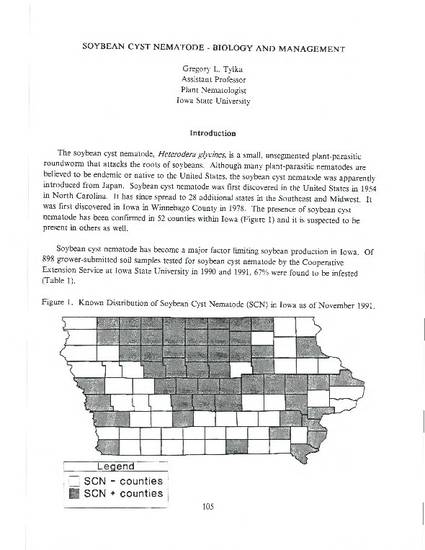
The soybean cyst nematode, Heterodera glycines, is a small, unsegmented plant-parasitic roundworm that attacks the roots of soybeans. Although many plant-parasitic nematodes are believed to be endemic or native to the United States, the soybean cyst nematode was apparently introduced from Japan. Soybean cyst nematode was first discovered in the United States in 1954 in North Carolina. It has since spread to 28 additional states in the Southeast and Midwest. It was first discovered in Iowa in Winnebago County in 1978. The presence of soybean cyst nematode has been confirmed in 52 counties within Iowa (Figure 1) and it is suspected to be present in others as well. Soybean cyst nematode has become a major factor limiting soybean production in Iowa. Of 898 grower-submitted soil samples tested for soybean cyst nematode by the Cooperative Extension Service at Iowa State University in 1990 and 1991, 67% were found to be infested (Table 1).
Available at: http://works.bepress.com/gregory-tylka/253/
